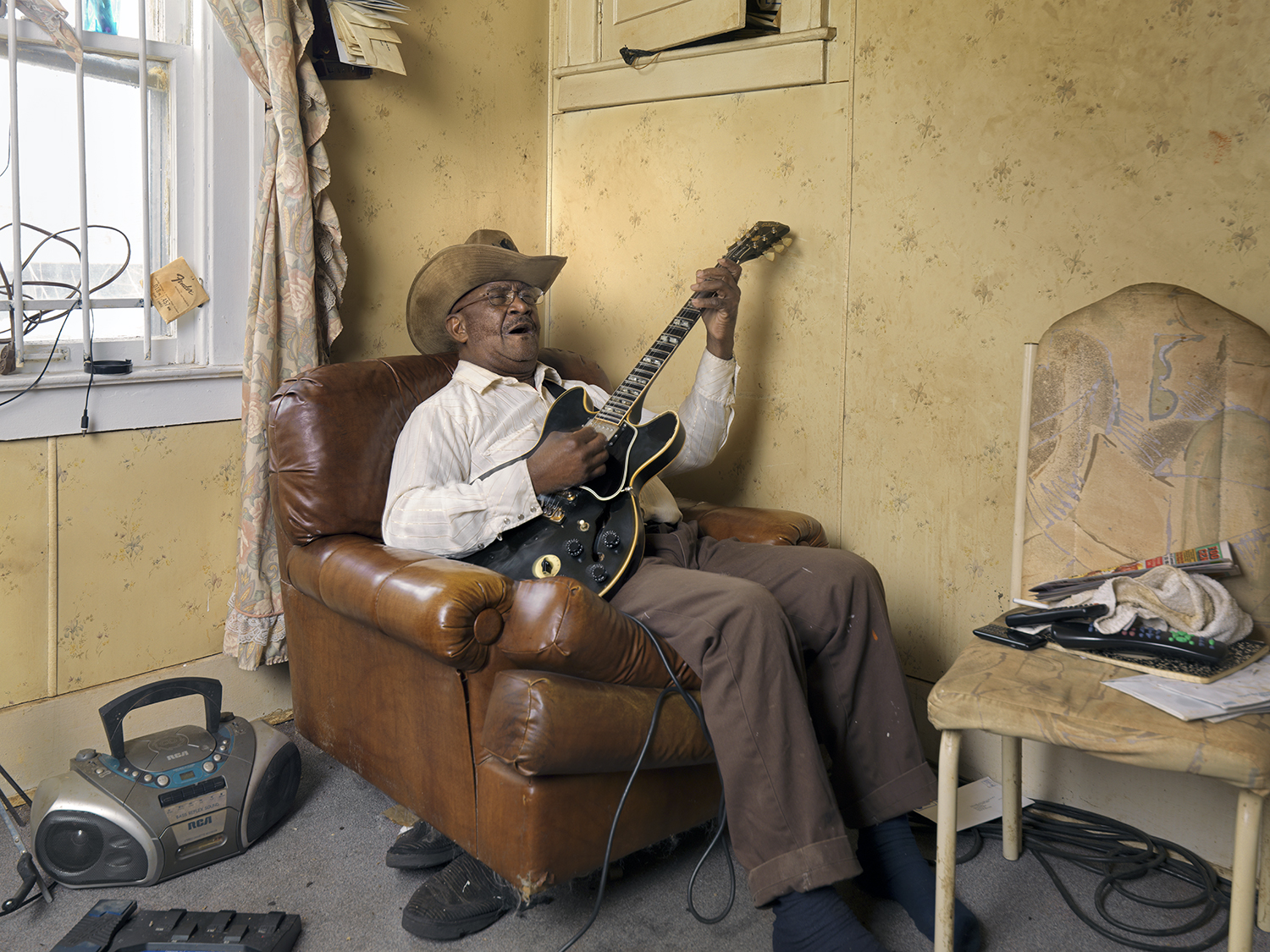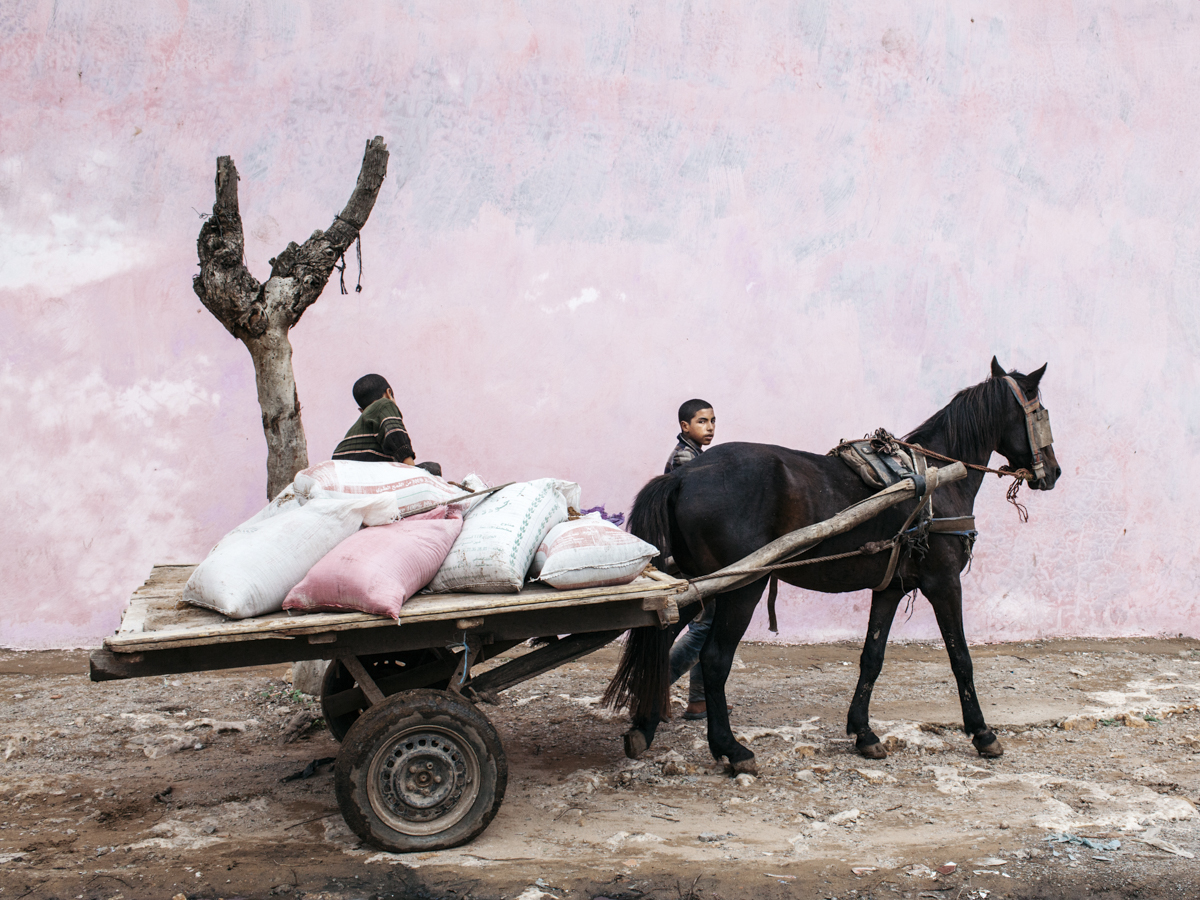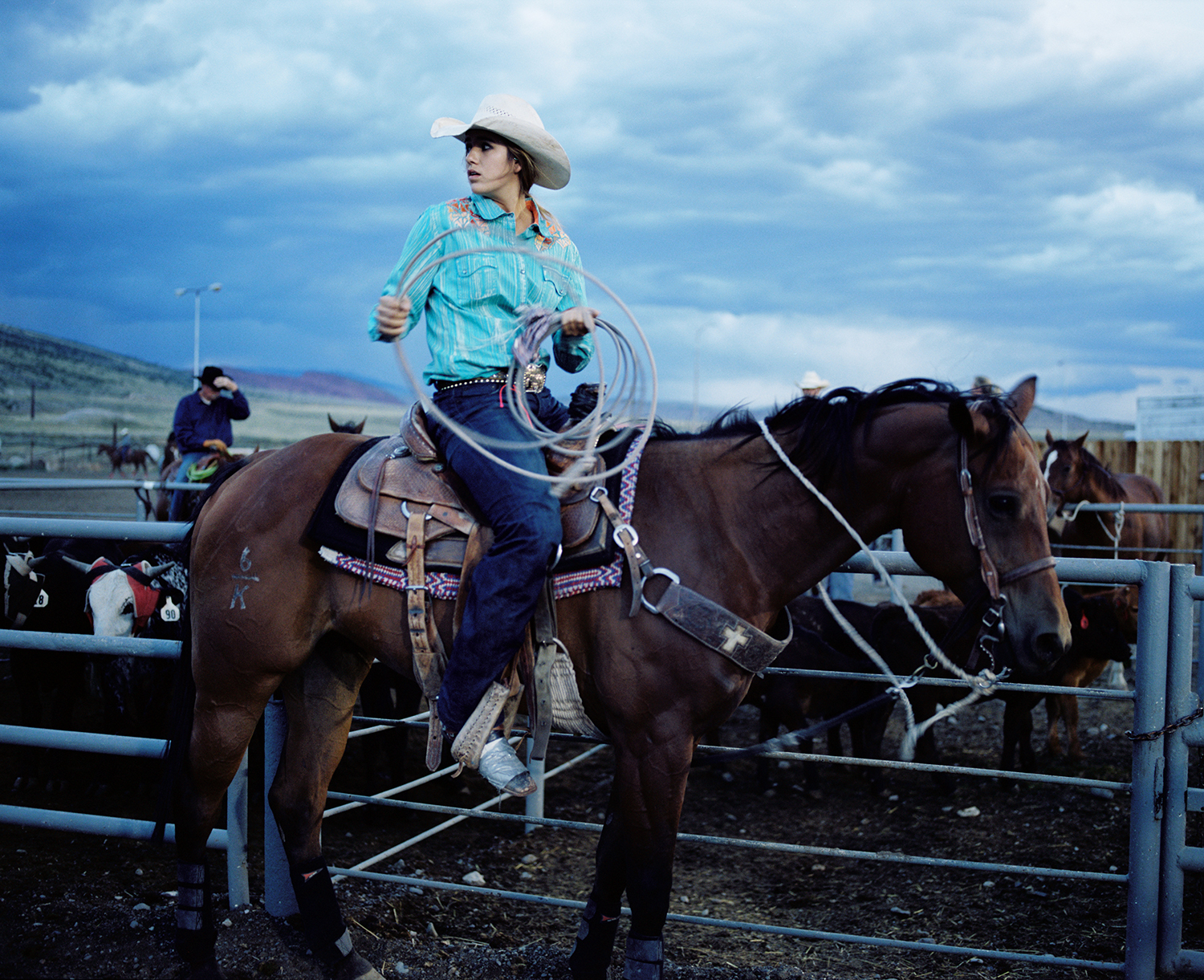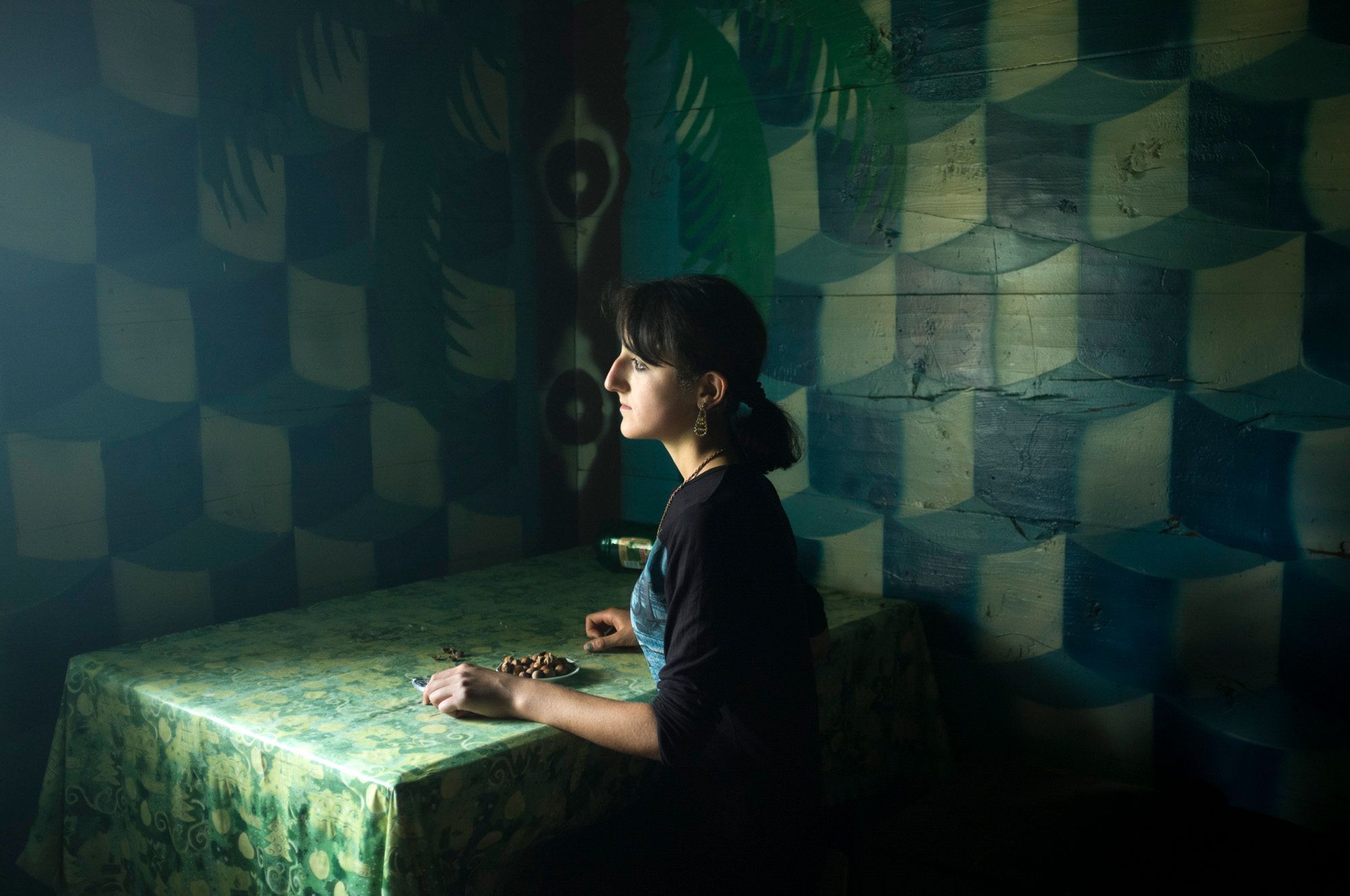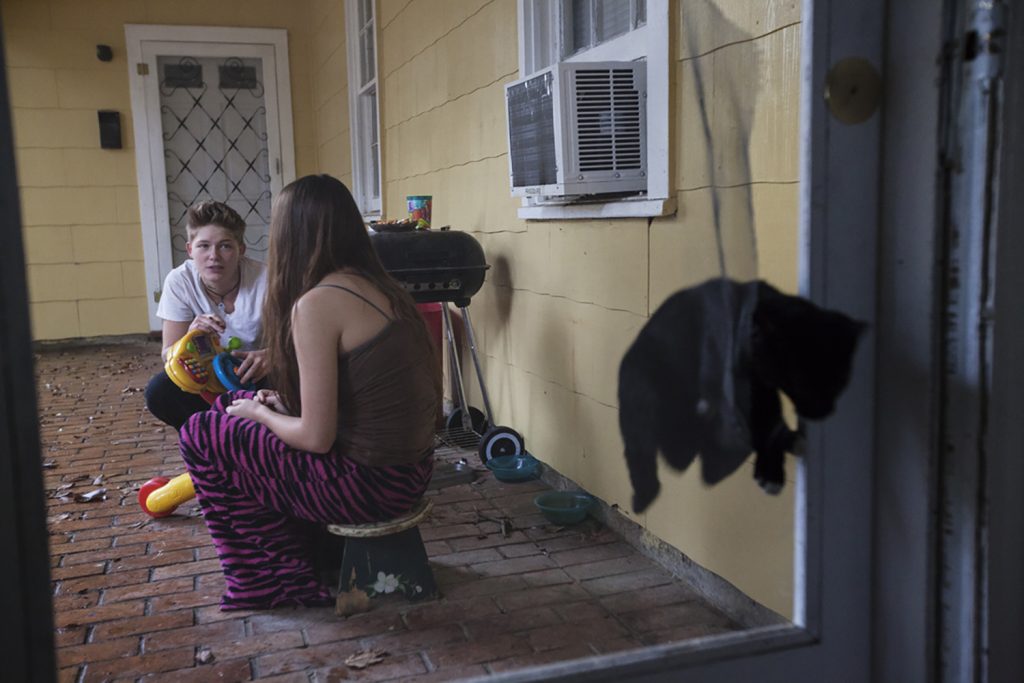
Can you explain your series and why did you choose this title?
Gravity is Stronger Here is a series about desire: to be seen and loved. On its face, it is a documentary project featuring Halea Brown and her dynamic Southern American family. For me, it is also about looking for America in America. One evening on Nelson Street, a man said this to me about his view of Greenville, MS: “Gravity is stronger here…”. Nelson Street used to be the commercial center of the black middle class in Greenville before the city began a steep economic decline. Now Nelson Street is quite neglected and impoverished. The line struck me and stuck with me. In the end, it felt like the right title. It expresses the cycle of feeling stuck — a cycle that is reinforced by both external and internal forces.
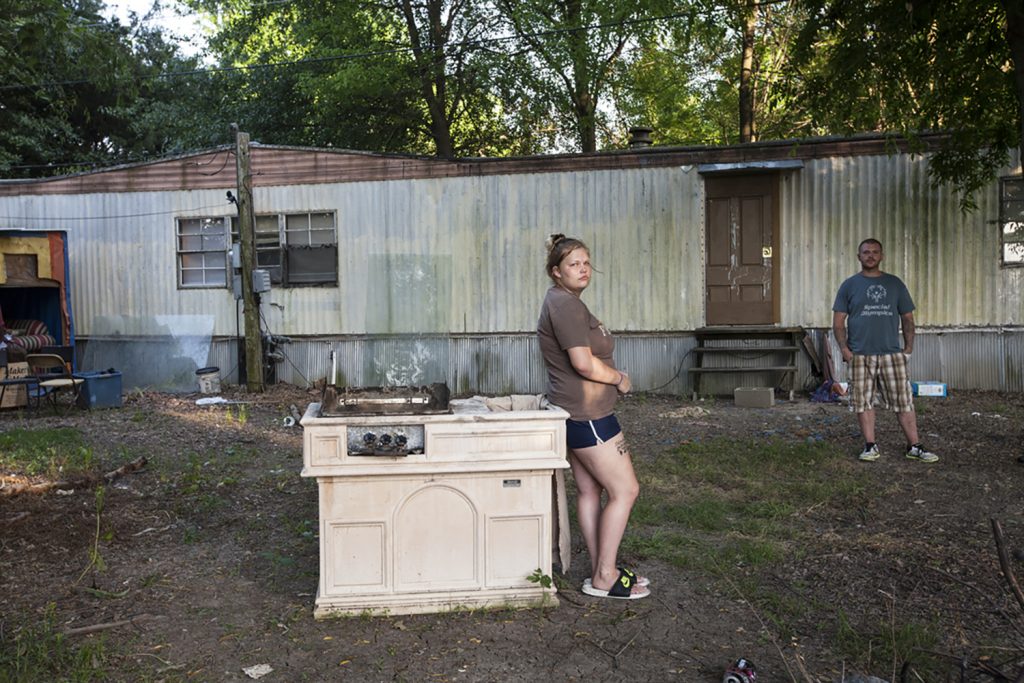
« I felt I needed to know more about the American South in order to have a more complete picture of this complex nation that I call home. »
Where did you get the idea for this project and how long have you been working on it?
It began in a conversation with my photography colleague, Jacob Layman. I expressed that I can’t possibly understand my own country as a New Yorker, a “Yankee.” I felt I needed to know more about the American South in order to have a more complete picture of this complex nation that I call home. Historically, the South has been very influential on US policy and ideologies. Of course, it continues to shape our national conversation. Jacob is from Alabama and he wanted to return to the area with his camera. We planned a trip together. In 2011, I visited Greenville, Mississippi, for the first time and returned time and again for the next five years.
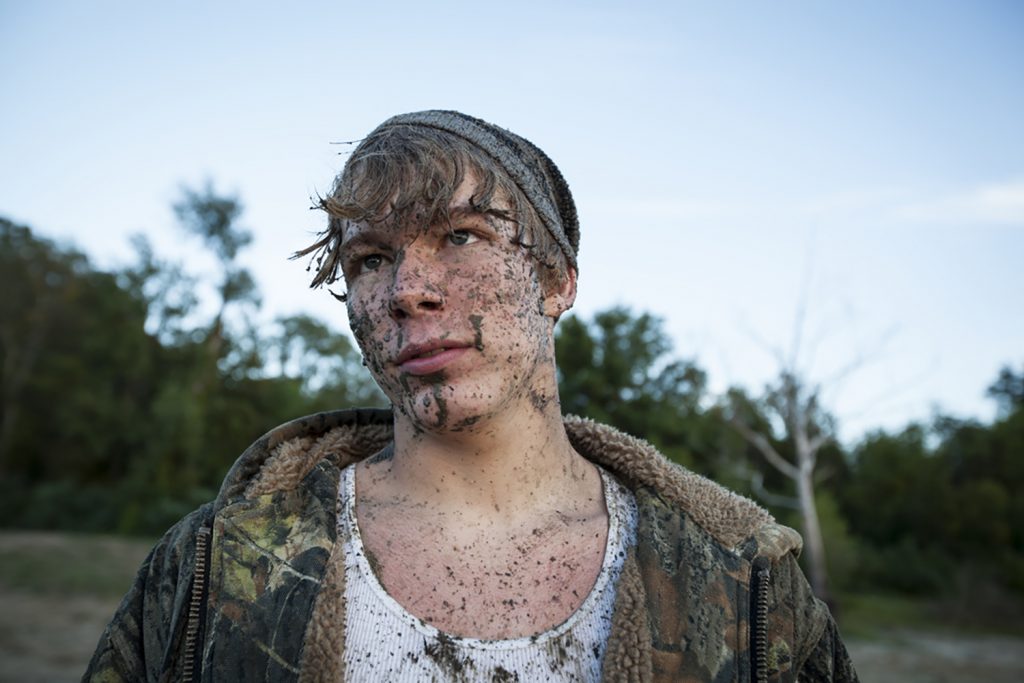
How did you meet Halea and what was your approach to directing this documentary? And how did your relationship with Halea evolve as you documented her life?
On my first trip down there I was getting something to eat at a karaoke bar called “Spectators” and Halea Brown was there, singing along to an Eminem song. Halea upended my expectations about the South — she is openly and comfortably gay in a very conservative community. Her conviction and presence impressed me. I ran after her and her girlfriend, Dakota, as they were leaving and she wrote her number on the back of my receipt. I still keep it today — it’s a treasured memento.
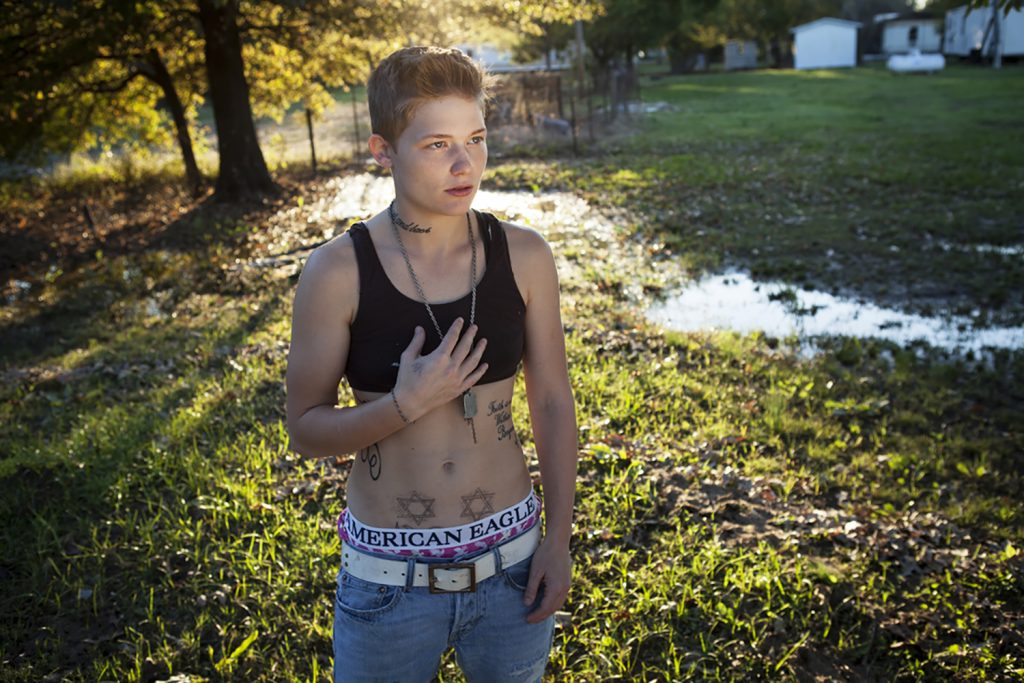
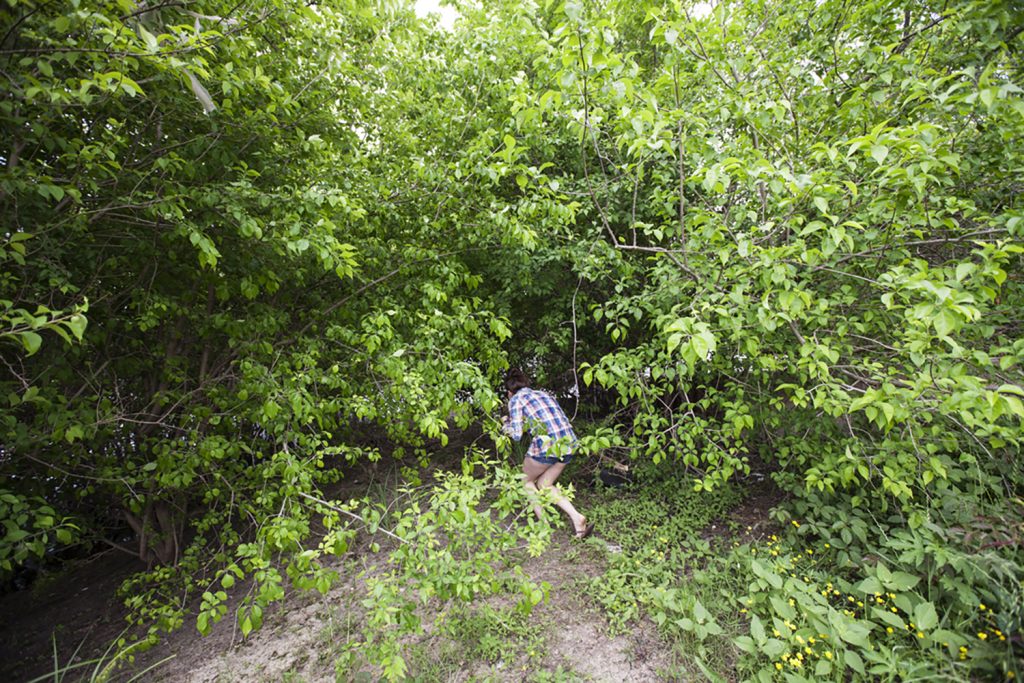
« I’m looking for ways to complicate the narrative »
You use photography, writing in your book, and video at the same time, why did you want to tell a story through several different mediums? And, there is some poetry in this project, especially in the videos. Is it also, in a way, the image you have of these people, this environment and these situations?
I always feel constricted by the boundaries of the documentary. I’m looking for ways to complicate the narrative — seeking a more “prismatic” view of the world. In this project, I felt that the combination of words and photographs could work together to present an ambiguous reality, a reality that reflects how protean we all are. I wanted to portray the essence of the Brown family in that time period, not a presumed reality. I asked the writer Jardine Libaire to come into the field with me. She brought another voice into the project that added to this pluralistic goal. The video excerpts were cobbled together as a coda.
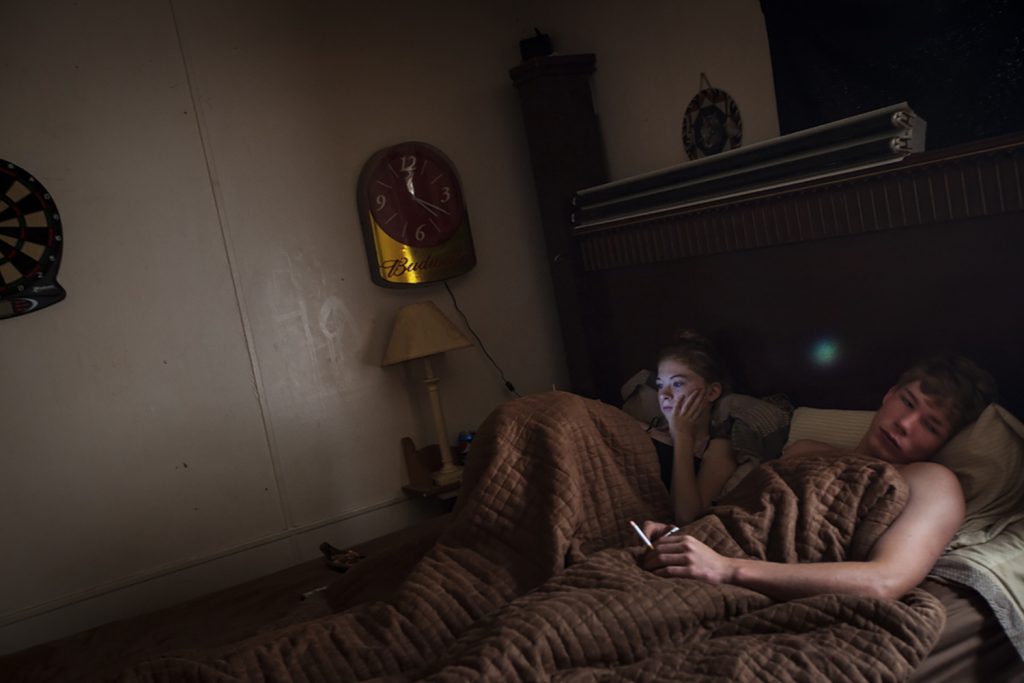
I had been gathering some audio and video along the way (not much) and figured it would be an informal experiment to make these shorts. I also wanted to play with the power dynamics in the documentary. Thus, in “Whisper In The Storm,” I collaborated with Halea on a music video for her song. She was no longer a “subject” but an active participant. I considered her a participant all along but this act made that intention more actualized. I also wanted to give something back to Halea, give her something that was her expression. I made another music video with her mother, Damian Hollis, who sang a Dolly Parton song. Dolly Parton’s agency wouldn’t give me permission to post the video online.
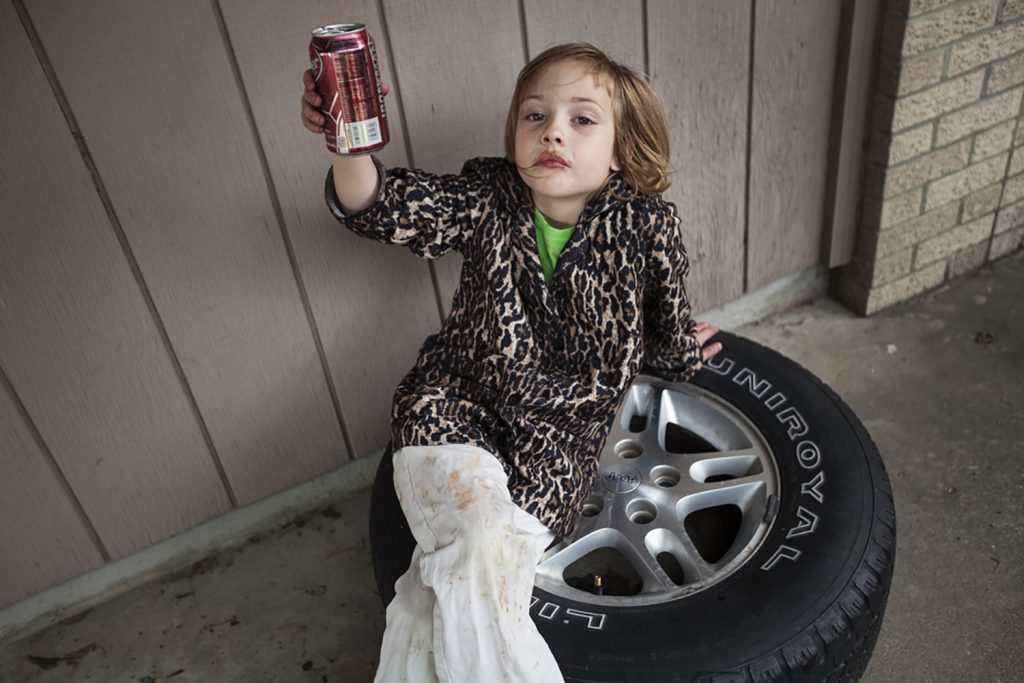

Through your work, did you want to give another face to America? Is there a critique of the inequalities in this work?
It is both a critique and a celebration of America.
Why did you want to make this series into a book? Is it the finality of this work or do you still photograph Halea?
Halea and I are in touch still, yes. For now, I photograph her and her siblings mainly at their request (for a high school graduation photo or a pregnancy, for example). I photographed Halea in Nov 2019 — she wanted photos of herself with studio lights. Halea works as an electrician these days but is looking for acting and modeling gigs on the side. She enjoys the act of making photos. I wouldn’t be surprised if I did a “Chapter II,” a follow-up project in the future.
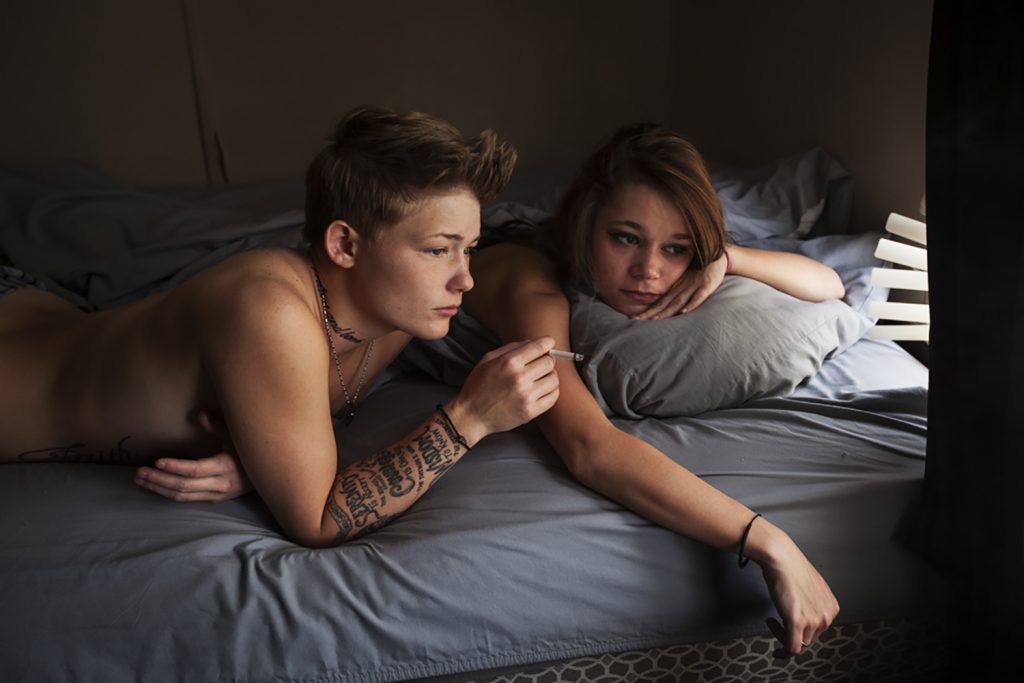
Do you have any particular photographs that can describe the series? What’s its story?
When I look at the photograph of Halea cliff-jumping, I see the heart of the story the most: grace and abandonment collide. If you look closely, you can even see her tattoo that reads “faith.” It also reveals a bit about Halea’s character; she is poised and confident while, in this example, in the middle of a freefall.
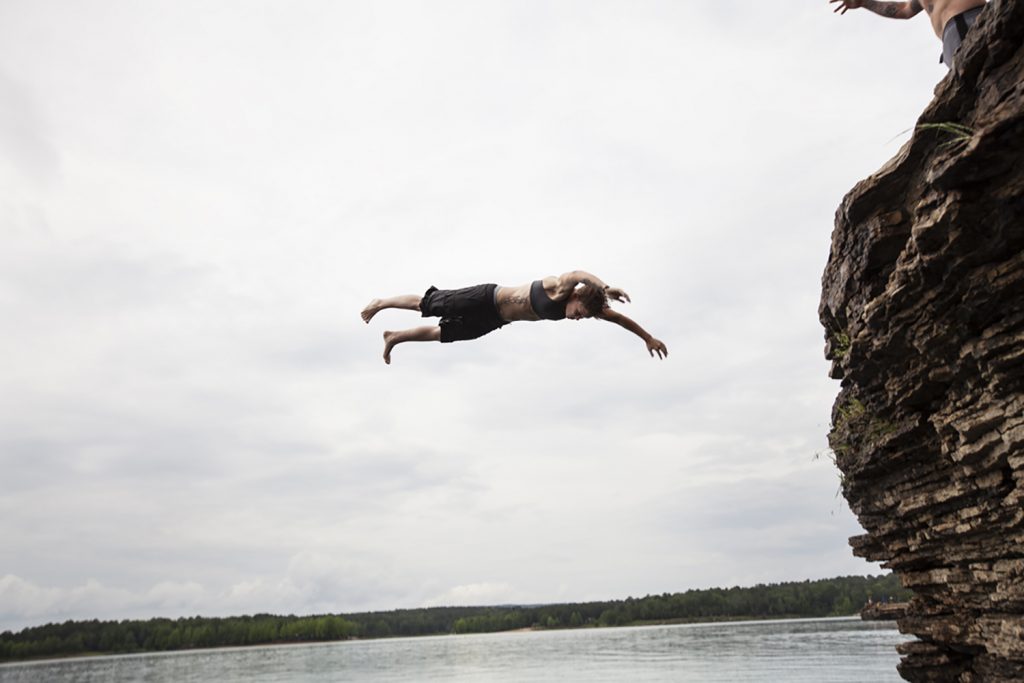
What is your inspiration for this work? And in general?
In terms of photography, Trent Parke’s work always inspires me. In Parke’s work, there is a sense that he is present and is still playing behind his camera. His work evokes a wonder for the visible world, an inquiry, but it also carries a sense of gravitas. His photos ask questions rather than provide answers. Lately, I’m viewing myself in the tradition of Chauncey Hare and Milton Rogovin. Both photographers work from a hybrid impulse of folklore and social justice. Their work is less about the single photograph and more about the archive. I’ve been looking at experimental films more and more as well. They are uniquely suited for non-linear storytelling: Bruce Conner, Chick Strand, and Marlon Riggs, for example. And, I always find myself circling back to the painter Romare Bearden.
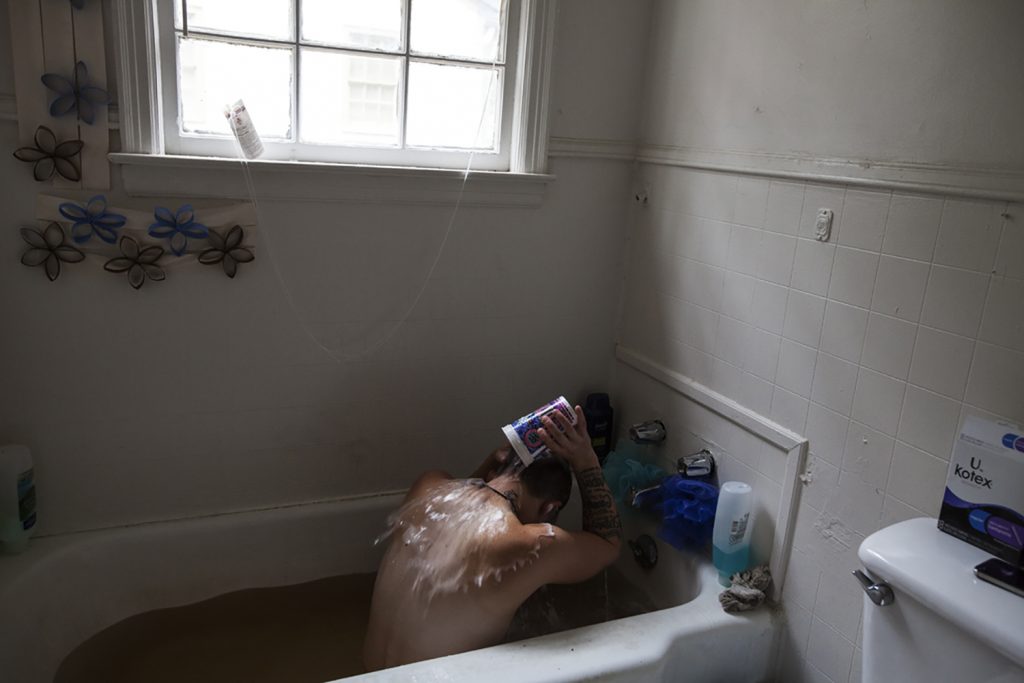

What is next for you? Futur ideas of a project?
I am working on a series that, for now, is called the “The Vertigo of Time.” The project “brings us into the homes and histories of formative local African American families today — introducing us to the descendants from Historic Stagville’s enslaved population in Durham, NC. The work considers the convergence of the past and present-day where our systems and individuals are part of a collective continuum.” I’ve been working on it for roughly three years and I can’t say when it will feel resolved and ready to publish. I like to take my time.
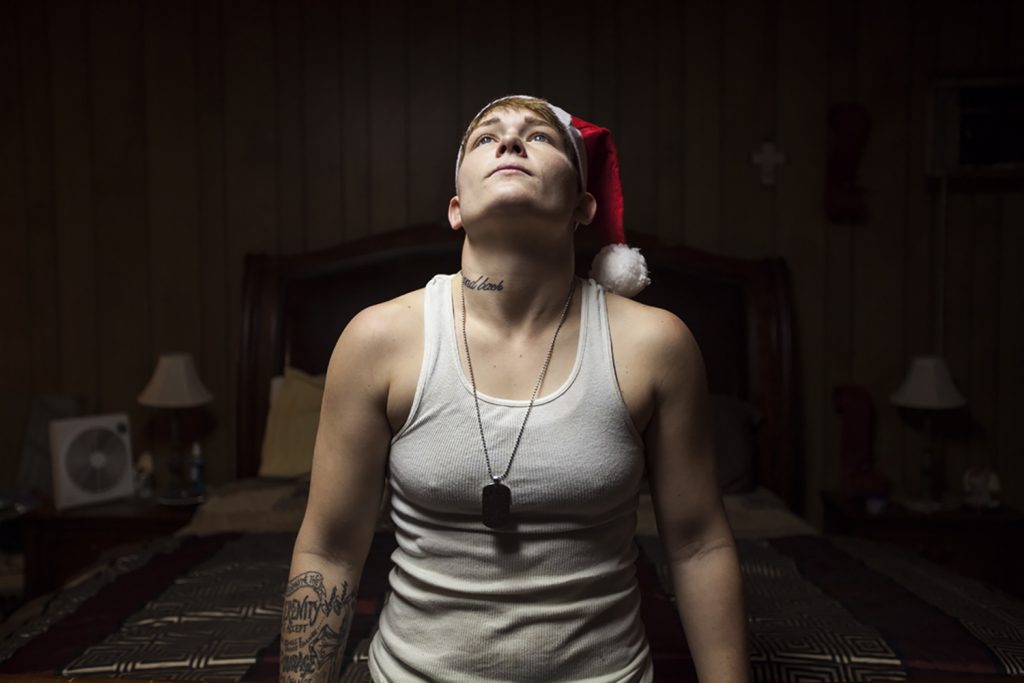
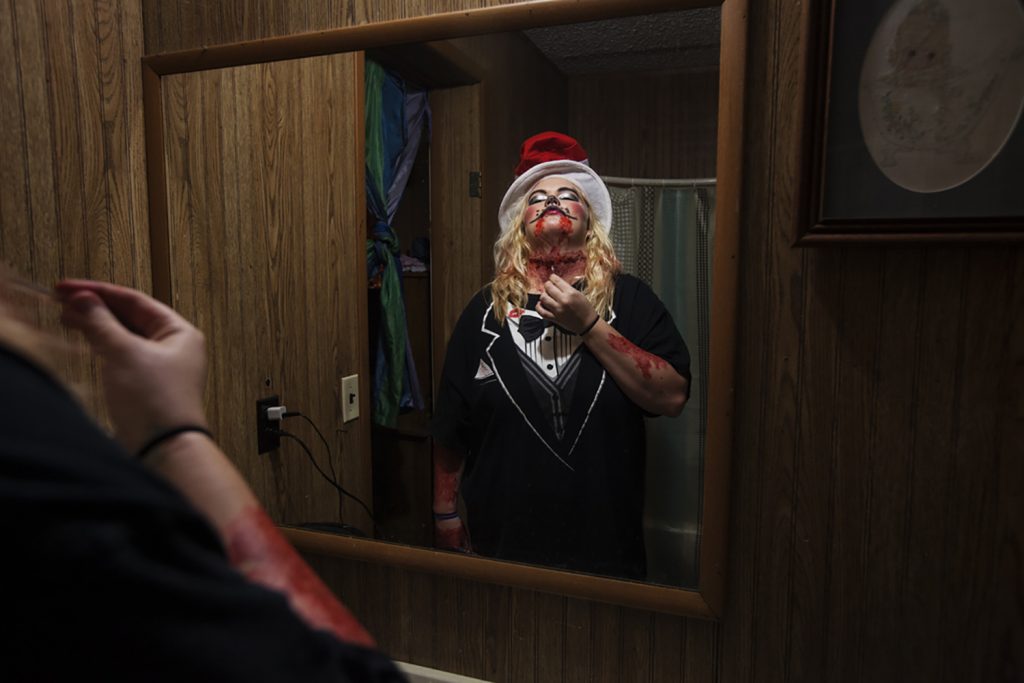
Your top 5 photobooks?
I don’t really have favorites overtime per se. I covet photobooks according to what I am looking for at any given time. Right now, I’m thinking hard about the archive and collective memory. I’m thinking about the photographer-subject relationship and the role of play and theater in visual storytelling. That said, here are some selections that contain those concepts:
Leonard Freed “Black in White America”
Harry Callahan “Eleanor”
Masahisa Fukase “Ravens”
Rosalind Fox Solomon “Liberty Theater”
Pieter Hugo “La Cucaracha”
Interview by Valentine Zeler
Photographer’s Links: Website – Instagram – Member of Inland Stories
The photobook « Gravity is stronger here » Published in 2017 by Kehrer Verlag.

